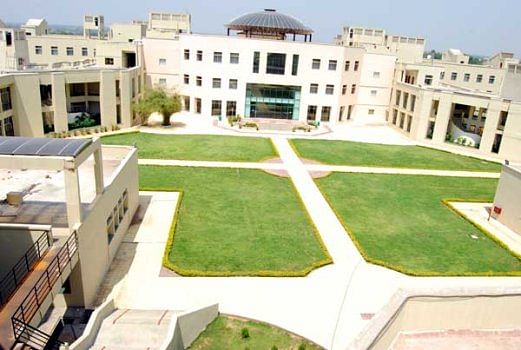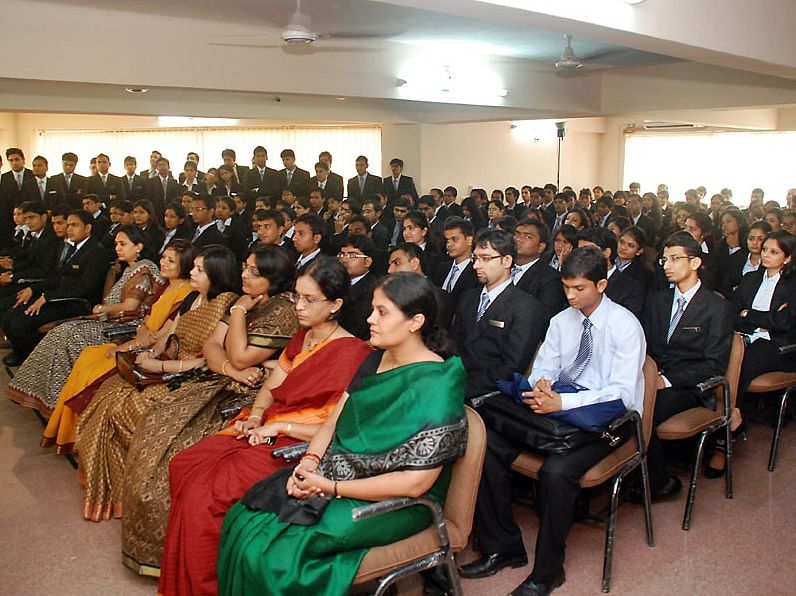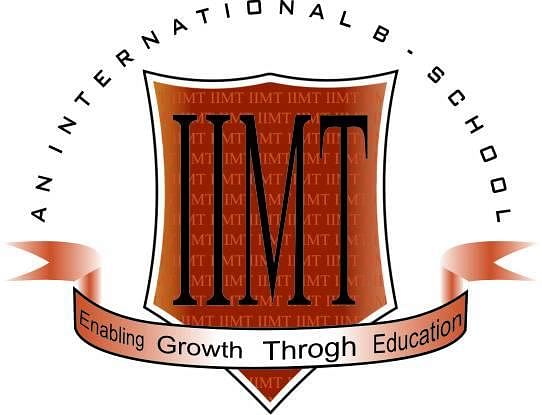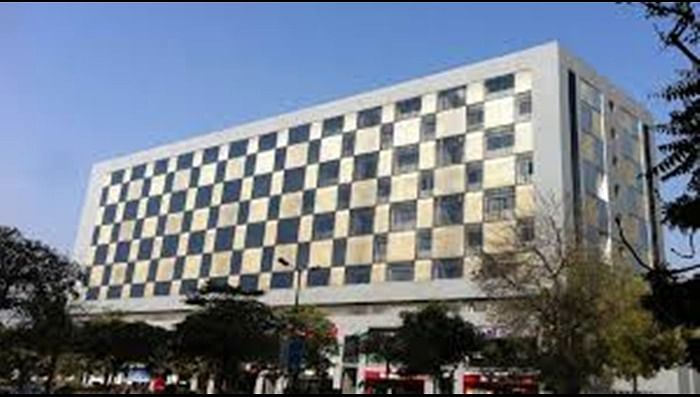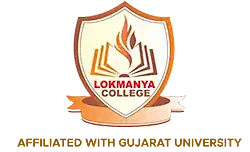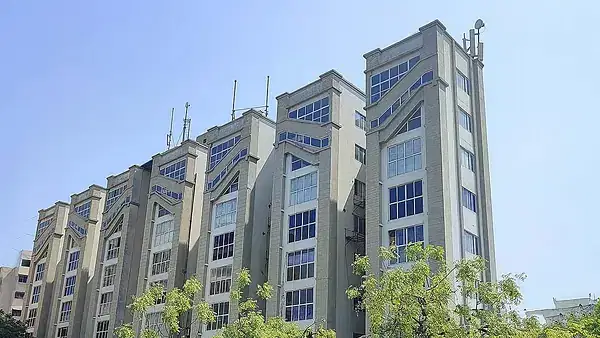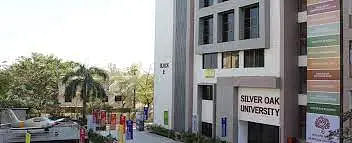IIM Ahmedabad admission 2026 will soon begin for MBA, and the admission depends on the scores of CAT. Indian Institute of Management–Ahmedabad (IIM–Ahmedabad) also has different postgraduate courses like PGPX and PGP-FABM and a few additional courses. For PGPX admissions are based only on GMAT/GRE scores. In addition, they accept applications from candidates who have taken the GRE, GMAT, GATE, UGC-JRF, IIMA Admission Test (IAT), and ICAR-SRF entrance exams. Another critical factor is having a solid academic record and percentage score. IIM Ahmedabad considers all these factors for admission to 398 seats for the PGP/ MBA program.
IIMA has decided to implement the Reservation of Seats for backward classes like Scheduled Caste, Scheduled Tribe, and Other Backward Classes in their doctoral program from the academic year of 2025 as per governmental norms. Other courses offered by the IIM Ahmedabad include AFP, the Armed Force Program, designed for officers of the Armed forces transitioning from the military work environment to the corporate sector.
IIM Ahmedabad has one of the most challenging admission processes, with an acceptance rate of only 0.25% in comparison to that of 1% to 2% in IIM Bengaluru.
Table of Content
- IIM Ahmedabad Admission: Important Dates 2026
- IIM Ahmedabad MBA Admission 2026
- IIM Ahmedabad MBA-FABM Admission 2026
- IIM Ahmedabad MBA-PGPX Admission 2026
- IIM Ahmedabad Online MBA Admission 2026
- IIM Ahmedabad ePGD-ABA Admission 2026
- IIM Ahmedabad FDP Admission 2026
- IIM Ahmedabad Reservation
IIM Ahmedabad Admission Dates 2026
IIM Ahmedabad MBA admissions are held based on the academic profile of the candidate, entrance exam scores, and performance in the IIM Ahmedabad selection procedure. The table below covers the important upcoming events of the IIM Ahmedabad admission process.
| Event | Date |
|---|---|
| CAT 2025 Registration Starts | August 1, 2025 |
| CAT 2025 Registration Ends | September 13, 2025 |
| CAT 2025 Exam | November 30, 2025 |
| CAT 2025 Results | Third week of December 2025 |
| IIM Shortlisting | January 2026 |
| Group Discussion & Personal Interview (GD-PI) | February – April 2026 |
IIM Ahmedabad MBA Admission 2026
IIMA's flagship course, the Postgraduate Programme (PGP), has been producing master's level graduates in business administration for over 55 years. It has consistently been recognized among the top programs in the world. The MBA course is offered in different specializations and is the most renowned MBA course in the country.
The total fee for the IIMA MBA program is INR 26.50 Lakhs. IIM MBA eligibility criteria at IIM in Ahmedabad is 50% in graduation and valid CAT scores. However, for international students, valid scores of GMAT scores are required. More details related to the IIMA course admission are given below:
IIM Ahmedabad Eligibility Criteria
The candidate must have completed a bachelor's degree at any university with at least 50% of the required credits or an equivalent CGPA (this is lowered to 45% for candidates who belong to the Scheduled Caste (SC), Scheduled Tribe (ST), or Persons with Disabilities (PwD) categories).
The MBA program at IIM Ahmedabad requires candidates to take the CAT exam, which is followed by a personal interview. A merit list of candidates who have been selected for admission is subsequently released. However, for international students, the institute considers GMAT scores. More details related to the admission and selection process are given below:
Step 1: CAT Registration and Appear for Entrance Exam
- There is no direct application form released on the official website of IIM Ahmedabad for the admission process. However, a link to the CAT website is available.
- Students must register for the CAT exam using their contact information and fill in the application form on the official website. Students can choose the institute of their choice at the time of filling out the application form.
Step 2: Shortlisting of Students for the Next Step
- Candidates who have applied to the program, have a valid CAT-2025 score, and meet the program's eligibility requirements are shortlisted for the Analytical Writing Test (AWT) and Personal Interview (PI).
Criteria for Shortlisting for AWT and PI
Applicants who took the CAT exam and submitted an application to the IIM Ahmedabad MBA program will be contacted for further consideration based on their CAT results. The IIM Ahmedabad CAT Cutoff 2025 (overall and sectional) for the various categories is given below:
| Category | Verbal Ability and Reading Comprehension percentile rank (PVARC) | Data Interpretation & Logical Reasoning percentile rank (PDILR) | Quantitative Ability percentile rank (PQA) | Overall percentile rank (PT) |
|
General/ EWS |
70 |
70 |
70 |
80 |
|
SC |
60 |
60 |
60 |
70 |
|
ST |
50 |
50 |
50 |
60 |
Step 3: Preparing Merit List
A merit list based on CAT scores, PI scores, and Profile scores will be created for the ultimate candidate selection. The table below provides the weighting requirements for creating a merit list based on several components:
| Particulars | Weightage |
|
CAT Score |
60% |
|
Personal Interview (PI) |
15% |
|
Profile |
25% |
The CAT score, not the CAT percentile, will be used, for preparation of the merit list. The method of calculating a candidate's CAT score involves dividing it by the highest CAT score obtained by all applicants for IIM Ahmedabad MBA Admission 2025.
Upon publication of the CAT results, the shortlisted candidates' details will be provisionally made accessible on the IIMA website (www.iima.ac.in) by the second week of January 2025. IIMA would also send AWT and PI call letters to the shortlisted candidates. Those applicants who are not selected for AWT & PI will not receive any correspondence.
Step 4: Offer Letter
Applicants who are offered admission to IIM Ahmedabad MBA program must accept the offer by the deadline. Candidates must pay an offer acceptance fee of INR 1 lakh, which will be deducted from their term one fee, in order to accept the offer.
Steps to Apply for IIM Ahmedabad MBA Admission
IIM Ahmedabad admission procedure for MBA starts with filling out a form to appear for CAT. Students applying for admission to the MBA course must read the admission announcements and requirements in detail.
- Register for the CAT exam by heading to the CAT website.
- Eligible applicants must register on the IIM Ahmedabad official website: https://www.iima.ac.in/
- Once the CAT result is announced, IIM A will call the selected candidates for AWT and PI.
- The application fee for general category students is INR 2,400.
IIM Ahmedabad BPGP Admission 2026
The Blended Post Graduate Programme (BPGP) at IIM Ahmedabad is a two-year MBA designed for working professionals and entrepreneurs, blending online learning with on-campus modules to develop leadership and management skills. The program offers flexibility for those balancing careers and education. The total fee for the BPGP is approximately INR 20 Lakhs.
Admission to IIMA BPGP depends on a valid CAT, GMAT, GRE, or IIMA Admission Test (IAT) score, along with academic and professional credentials.
IIM Ahmedabad BPGP Eligibility Criteria
To apply for the BPGP, candidates must meet the following requirements:
- A Bachelor’s degree, CA, CS, ICWA, or equivalent in any discipline with at least 50% marks or equivalent CGPA from a recognized university (10+2+3 or 4 years of education).
- Minimum 3 years of full-time work experience after graduation.
- Minimum age of 24 years; no upper age limit.
- A valid CAT score (within last 5 years), GMAT/GRE score (test-center-based, within last 5 years; GMAT Focus Edition accepted, online scores invalid), or IIMA Admission Test (IAT) score.
IIM Ahmedabad BPGP Selection Criteria
Candidates meeting the eligibility criteria, who have applied for the program and have a valid CAT, GMAT, GRE, or IAT score, will be shortlisted for a Personal Interview (PI) in the first stage. The IIMA Admission Test (IAT) is an online exam for candidates without CAT/GMAT/GRE scores, assessing analytical, verbal, and quantitative skills.
The selection process is divided into two stages:
Step 1: Shortlisting
Candidates are shortlisted based on their entrance exam score (CAT, GMAT, GRE, or IAT), academic performance (school and college marks), and professional background (work experience and achievements). Diversity factors, such as gender and professional backgrounds, are also considered.
Step 2: Final Selection
Shortlisted candidates attend a Personal Interview (PI). The final selection is based on a composite score, with the following weightages:
|
Factors |
Percentage |
|---|---|
|
Entrance Exam Scores (CAT/GMAT/GRE/IAT) |
65% |
|
Application Rating Scores (Academics, Work Experience) |
35% |
As per Government of India mandates, 27% of seats are reserved for NC-OBC, 15% for SC, 7.5% for ST, 5% for PwD, and up to 10% for EWS candidates. Candidates must accurately select their category in the application form.
Steps to Apply for IIM Ahmedabad BPGP Admission
The BPGP admission process starts with applying for an entrance exam and completing IIMA’s application. Here’s how to apply in simple steps:
-
Register for Entrance Exam
Register for CAT, GMAT, GRE, or IAT. For CAT, visit www.iimcat.ac.in, create an account, and select IIM Ahmedabad BPGP while filling the form. For IAT, check the BPGP portal for registration details. -
Complete IIMA Application
Visit the BPGP application portal (bpgp.iima.ac.in), register, and fill out the application form with personal, academic, and professional details. Choose your entrance exam (CAT, GMAT, GRE, or IAT). -
Upload Supporting Documents
Submit scanned copies of academic transcripts, degree certificates, work experience proof, and entrance exam scorecard (if available). Ensure documents meet the specified format and size requirements. -
Pay Application Fee
Pay the non-refundable fee: INR 2,000 for CAT/GMAT/GRE applicants, INR 5,000 for IAT (India), or USD 200 for IAT (Dubai). Payment is made online via the portal. -
Submit Application
Review and submit the application by the deadline. -
Await Shortlisting and PI
After CAT results (expected December 2025), IIMA will shortlist candidates and notify them via email for Personal Interviews, conducted in cities like Ahmedabad, Bengaluru, or online. -
Confirm Admission
Post-PI, selected candidates will receive an admission offer via email. Confirm acceptance by submitting required documents and paying the initial fee via registered mail or online.
IIM Ahmedabad MBA-FABM Admission 2026
IIMA PGP-FABM is a two-year, full-time residential program at the MBA level that prepares students for careers in food and agribusiness management. Eduniversal, Paris, France, has continuously named PGP-FABM as the best program in the world for agribusiness and food industry management. The total fees for the IIMA MBA-FABM is INR 26.50 Lakhs
Admission to IIMA MBA-FABM depends on the CAT score of the students. For international students, the institute accepts GMAT scores.
IIM Ahmedabad MBA-FABM Eligibility Criteria
A Bachelor's or Master's degree in agricultural sciences or allied fields, with at least 50% or an equivalent CGPA, is required of the candidate. (This is relaxed to 45% in the case of candidates who fall under the categories of Persons with Disabilities (PwD), Scheduled Caste (SC), and Scheduled Tribe (ST).)
IIM Ahmedabad MBA-FABM Selection Criteria
Candidates who meet the eligibility requirements outlined below, have applied for the program, and have a valid CAT 2024 score will be shortlisted for the Analytical Writing Test (AWT) and Personal Interviews (PI) in the first stage.
Important Note: Foreign people (holders of foreign passports) having a background in food and agriculture who are residing in India are required to have taken the GMAT Focus Edition, which is administered in test centres. The steps for the selection are given below:
Step 1: CAT Registration and Appear for Entrance Exam
- There is no direct application form released on the official website of the IIM Ahmedabad for the admission process. However, a link to the CAT website is available.
- Students must register for the CAT exam using their contact information and fill in the application form on the official website. Students can choose the institute of their choice at the time of filling out the application form.
Step 2: Shortlisting of Students
- The candidates having a bachelor's or master's degree in agricultural sciences or other agriculture-related fields will be given preference throughout the shortlisting process for the analytical writing test and personal interview, as the program is sector-specific and favours people with relevant educational backgrounds.
The division of different factors for the selection of candidates are given below:
| Factors | Percentage |
|
CAT scores |
65% |
|
Application Rating Scores |
35% |
The Government of India mandates that 27% of the seats be set aside for NC-OBC candidates, 15% for SC candidates, 7.5% for ST candidates, 5% for PwD candidates, and up to 10% for candidates from Economically Weaker Sections (EWS). Additionally, candidates must carefully check the category on the CAT application form to which they belong.
Steps to Apply for IIM Ahmedabad MBA-FABM Admission
IIM Ahmedabad admission procedure for MBA-FABM starts with filling out a form to appear for CAT. Students applying for admission to the MBA course must read the admission announcements and requirements in detail.
- Register for the CAT exam by heading to the CAT website.
- Eligible applicants must register on the IIM Ahmedabad official website.
- Once the CAT result is announced, IIM A will call the selected candidates for AWT and PI.
- For the shortlisting procedure, candidates must fill out a form and provide supporting documentation.
- Following PI, IIMA will announce the candidates who have been chosen and who must confirm their admission by sending information via registered mail.
IIM Ahmedabad MBA-PGPX Admission 2026
The MBA-PGPX is a postgraduate management program designed for experienced professionals with four years or more of experience after a bachelor's degree. The total course expense is of INR 33 Lakhs. More details related to the course are given below:
IIM Ahmedabad MBA PGPX Eligibility Criteria
Applicants must have a bachelor's degree or equivalent in any field. The minimum age of the applicant must be 25 years old There is no upper age limit for the applicants. Students must also have a valid GMAT/GRE/IAT score. A requirement of four years of minimum full-time employment experience following graduation is also there.
IIM Ahmedabad MBA PGPX Selection Criteria
For admission to IIM Ahmedabad MBA MBA PGPX program, students who fulfill the eligibility criteria and have valid GMAT or GRE scores must apply through the official website. The IIMA application portal will only be active during the admission season.
There will be three rounds in the selection process for the PGPX 2025–2026 cohort of candidates. A demanding admissions process that involves leadership profiling, in-person interviews, and standardized test results (GMAT/GRE/IAT) is used to choose PGPX students.
Step 1: Application for the Course
- Once the application portal opens, interested candidates must submit their application form along with the valid scores of GMAT or GRE.
- Students are shortlisted based on the scores of their qualifying exams and on the GMAT/ GRE.
Step 2: Essay Writing and Interview
- Selected students will then have to submit the essays on the given subjects in the stipulated time.
- Students will then appear for personal interaction or PI with the members of the IIMA admission committee.
The Institute shall adhere to the reservation policies of the Government of India for PWD, NC-OBC, EWS, SC, and ST.
Steps to Apply for IIM Ahmedabad MBA PGPX Admission
Students keen on IIM Ahmedabad admission for PGPX can directly apply through the application portal that opens during the admission period. The steps to apply for the course are given below:
- Visit the official website and click on Academics.
- Choose the course and pick admission from the drop-down menu.
- Click on the Apply button on the right-hand side of the webpage.
- Read the brochure and instructions carefully.
- Sign up using contact information.
- Create login and password.
- Sign in using your login id and password.
- Fill in the application form and choose the course option.
- Pay the application fee of INR 9000. The application fee will be non-refundable.
The application portal for the course is currently open and will close on October 14, 2024.
IIM Ahmedabad Online MBA Admission 2026
IIMA Online MBA is a two-year postgraduate degree-granting program available to students. The course is mostly offered in a synchronous online format, which is appropriately supplemented by separate on-campus courses. The architecture of blended learning makes it easier for those who would rather combine their professional and academic lives. The total program fee for the course is INR 20 Lakhs.
To gain admission to the online course, applicants must apply online through the official website. Admission to the courses is based on the scores of the GMAT/ GRE. IAT is an online assessment test designed for applicants who are unable to apply using traditional test results from tests like the GMAT, CAT, or GRE.
IIM Ahmedabad Online MBA Eligibility Criteria
- For IIM Ahmedabad admission for Online MBA, eligibility criteria include a minimum age limit of 24 years. However, there is no upper age limit.
- Applicants must be working professionals with a world experience of a minimum of 3 years after graduation.
- Applicants must also hold a bachelor's degree, CA, CS, ICWA, or an equivalent qualification in any field
IIM Ahmedabad Online MBA Selection Criteria
Applicants must fulfill the basic eligibility criteria for admission. They must also appear for the IAT and IIM Ahmedabad Admission Tests conducted by the institute in case they do not have valid scores on the GMAT and GRE. Interested candidates can apply for admission through the official admission portal. The portal or the link is active only during the admission cycle.
The IAT will follow a format that is comparable to previous managerial aptitude examinations. The 90-minute IAT will consist of 45 questions.
Step 1: Register for the IAT
- Using the link available on the official website, interested candidates can register for the entrance exam.
- Students who have valid GMAT/ GRE scores can fill in the scores in the application and wait for the shortlisting.
Step 2: Personal Interview
Shortlisted candidates are then called for personal interaction or an interview with the admission committee.
Steps to Apply for IIM Ahmedabad Online MBA Admission 2026
Students seeking IIM Ahmedabad admission for Online MBA course can apply for the course through the official website. Steps to do so are given below:
- Visit the official website.
- Click on Academics and choose the course.
- Click on the admission notification on the right-hand side. The notification will only be available during the admission process.
- Read the details and requirements carefully.
- Fill in the application form and pay the application fee.
IIM Ahmedabad ePGD-ABA Admission 2026
IIMA offers a 16-month diploma program called ePGD-ABA. The program offers a well-balanced selection of courses on machine learning algorithms, cloud computing, data visualization tools and techniques, and modeling, and analysis of various data types and sizes. The course is offered in domain-specific applications of data analytics in marketing, human resources, finance, operations, and public policy. The total fee for this one-year course is INR 12 Lakhs.
It is a hybrid program with on-campus classes, online sessions, and project work.
IIM Ahmedabad ePGD-ABA Eligibility Criteria
The eligibility criteria for the ePGD-ABA are given below:
- Applicants must hold a bachelor’s degree in any discipline from a recognized university.
- A word experience of 2 years after graduation is required, too. My preferred field of work is Business Analytics.
- Interested applicants must also have a valid score of CAT/GATE/GMAT/GRE or the ePGD-ABA qualifying-cum-aptitude test.
IIM Ahmedabad ePGD-ABA Selection Criteria
- Those who have applied for the course are selected on the basis of their qualifications, work experience, and the scores on the entrance exam.
- Along with the application, students must also submit their” Statement of Purpose” highlighting their future plans and aspirations.
- Once the shortlisting is done, selected students are then called for personal interaction.
Steps to Apply for IIM Ahmedabad ePGD-ABA
Interested candidates can apply for the course through the official website. Follow the given steps for the application:
- Visit the official website.
- Click on the Academics.
- Choose the course. Click on Admission from the drop-down.
- Click on “Apply Now”. Read the details given.
- Register using contact details and verify the details.
- This will generate a user ID and password.
- Login again using them and fill in the application form.
- Pay the application fee.
IIM Ahmedabad FDP Admission 2026
The Faculty Development Program (FDP) has basically been designed for management educators who want to learn and experiment with effective pedagogical techniques, expand their knowledge of advanced topics, and become familiar with the fundamentals of conducting research studies.
The program is one of two certification options, and applicants can choose one of these only.
- Certificate of Participation in the Faculty Development Programme in Pedagogy and Research Methods
- Certificate of Participation in the Faculty Development Programme in General Management
IIM Ahmedabad FDP Eligibility Criteria
- Participants must have at least two years of post-graduate research experience or teaching experience in management.
- Participants under 45 years old will be given preference.
- Based on previous experiences, individuals who are just starting out in their professions as teachers or researchers tend to gain the most.
IIM Ahmedabad FDP Selection Criteria
The selection of the candidates for this course has follow steps:
Step 1: Evaluation of the application form.
The application is evaluated based on the following details.
- Teaching and/or research experience
- Educational background and purpose statements.
Step 2: Personal Interview
Once the application is submitted, the IIMA admission committee will also conduct an interview.
Steps to Apply for the FDP Certificate
- Visit the official website.
- Click on the Academics.
- Choose the course. Click on Admission from the drop-down.
- Read the brochure carefully.
- Click on the link for admission.
- Register using contact details and verify the details.
- This will generate a user ID and password.
- Login again using them and fill in the application form.
- Choose the certificate you want to apply for.
- Pay the application fee.
IIM Ahmedabad Reservation
Based on the reservation rules as per the latest government norms, IIM Ahmedabad and all IIMs offer reservations to different categories for its MBA and other executive courses. These reservation percentages are shown below:
| Category | Reservation Percentage |
| OBC (non-Creamy) | 27% |
| SC | 15% |
| ST | 7.50% |
| PwD | 5% |
| EWS | upto 10% |
Applicants will be able to avail these benefits after submission of required documents.
![Indian Institute of Management, [IIM] Ahmedabad](https://media.getmyuni.com/azure/college-image/small/indian-institute-of-management-iim-ahmedabad.jpg)



